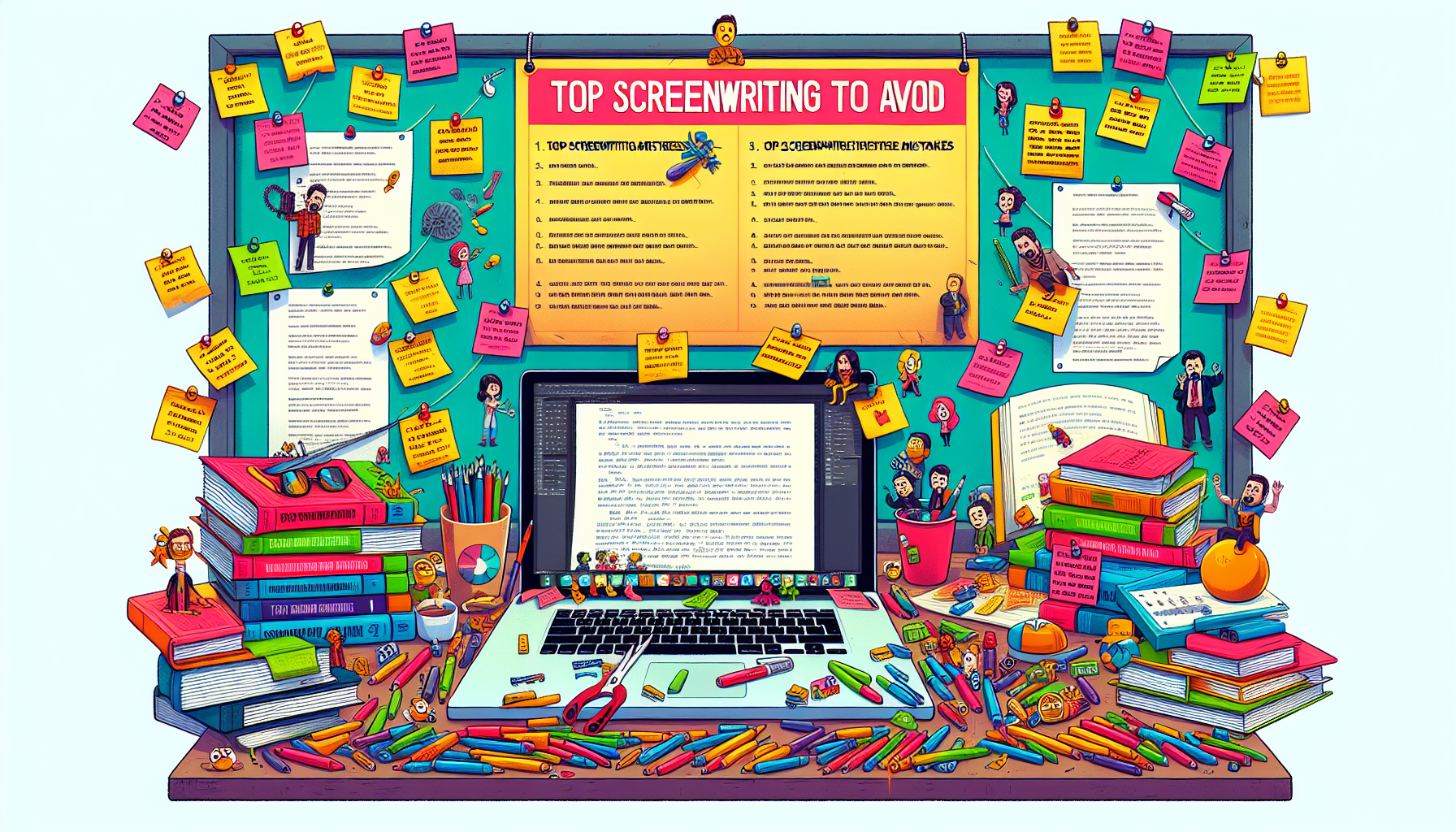
Oh, The Blunders You Will Dodge: Top Tips to Avoid Common Screenwriting Mistakes
The Curse of the Talking Heads
Picture this: Two characters, parked on a sofa, babbling on for pages. Riveting? Not so much. This common faux pas, known affectionately as the ‘Talking Heads’ syndrome, occurs when dialogue takes the wheel, and action and description get tied up and thrown in the trunk. Screenplays are visual blueprints, folks! To avoid creating a glorified radio play, sprinkle your sparkling dialogue with action. Have your characters do something. Maybe they’re folding laundry with the grace of a bull in a china shop or sculpting a hideous vase—anything to keep viewers visually engaged while they yak.
Escape from Exposition Land
Expository dialogue is like that one friend who can’t tell a story without the family tree backstory. It’s tempting to have characters explain the plot to your audience, but hearing Bob recite the saga of why the secret treasure must be found by midnight can induce yawns. Show, don’t tell! Instead of Bob detailing the treasure backstory, why not a quick, snazzy flashback sequence of pirates burying the loot during a storm? Visual storytelling not only keeps your audience awake but also on the edge of their popcorn-strewn seats.
The Overcrowded Party
You know the scene: Characters popping out of the woodwork, each with a quirky name and an even quirkier backstory. It feels like a party where you don’t know anyone’s name, doesn’t it? Here’s a pro tip: If a character doesn’t change the plot’s course or add significant tension, maybe they’re just there for the free snacks. Streamline your story. Less can indeed be more, especially when each character can shine without elbowing others for space.
Structure, or Lack Thereof
Skipping out on a solid structure is like building a house by first installing the roof. Chaos will ensue, with rain eventually falling on your head. Many screenplays suffer from ‘Brilliant Opening, Flimsy Middle, Rushed Ending’ syndrome. A sturdy structure with a clear beginning, middle, and end, where each section smoothly transitions into the next, keeps the story compelling. Not sure how to achieve this? Look to the classic three-act structure as a reliable blueprint. It’s a classic for a reason—it works.
The Monotone Menace
Characters should be like ice cream flavors: distinctly delightful in their own way. When they all start sounding like variations of vanilla, you hit the dreaded Monotone Menace. Each character should have a unique voice, reflective of their background, personality, and current motivations. If your hero and villain casually sound like long-lost twins, well, it’s time to revamp their dialogues. Mix it up! Maybe one speaks in terse fragments, while another waxes poetic about every fire hydrant they encounter.
Cliché, The Sneaky Saboteur
The ‘chosen one’ orphan, the villain monologuing instead of eliminating his enemy, the inevitable love triangle—clichés are comfortable, like an old shoe. But who wants to wear old shoes at a gala? Break away from the predictable; surprise your audience! Flip clichés on their head or better yet, create fresh scenarios that make viewers rethink the norms. Originality is worth its weight in screenplay gold.
Wrap Your Head Around Format
Never underestimate the power of format. A beautifully written screenplay that looks like a hot mess, with slug lines jumbled and actions threaded through dialogues? A quick way to the ‘no’ pile. Screenwriting software is your friend. Final Draft, Celtx, and others will keep you in line—literally. Remember, a clean, professionally-formatted script is not just a pleasure to read; it shows you respect the reader’s time and the craft.
So, wield these tips like a skilled swordfighter in a period drama—gracefully and effectively. Avoiding these common screenwriting blunders can elevate your script from ‘meh’ to ‘more, please!’ and before you know it, you might just be giving an acceptance speech at a fancy podium.






